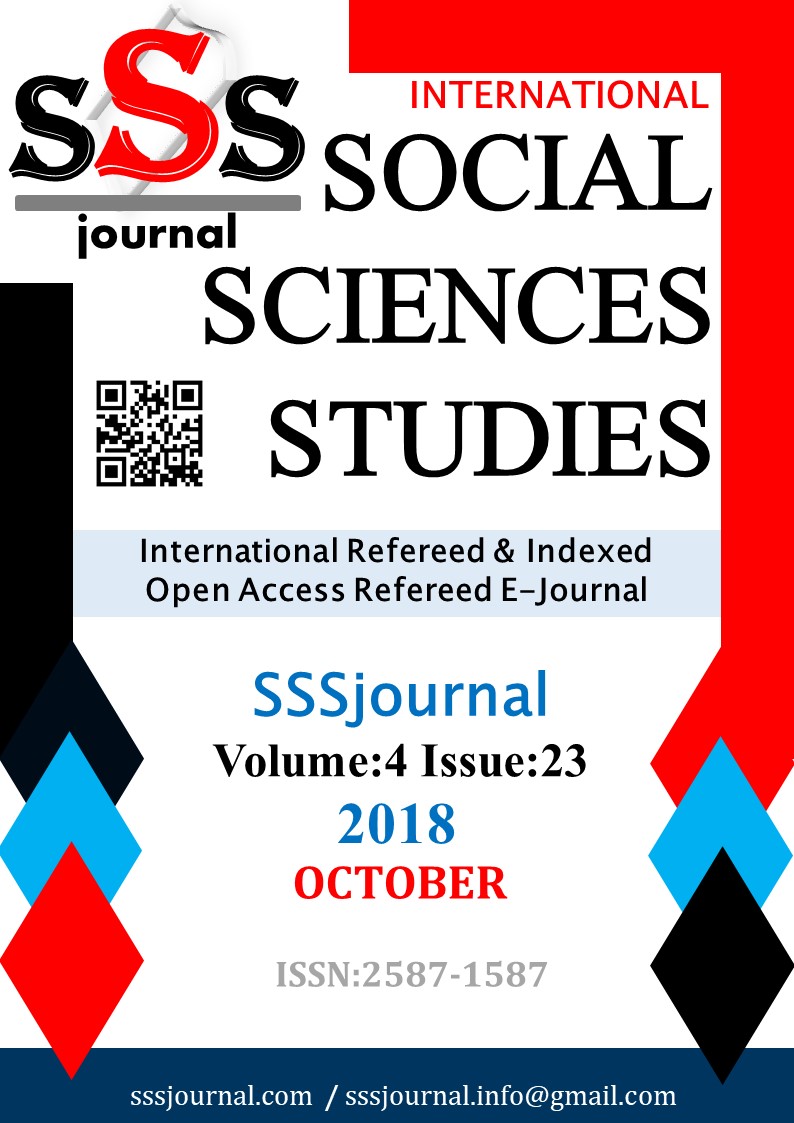Author :
Abstract
Küresel bir köy halini almakta olan günümüz dünyasında artık çalışan faktörü en ön planda yer almaktadır. İş yaşamı içerisinde çeşitli örgütsel ve çevresel faktör ile etkileşim içerisinde olan çalışanlar yapıları nedeni ile biyolojik ve psikolojik olarak diğer bireylerden daha hassas konumdadırlar. Örgütlerde devamlılığın sağlanması çoğu üretim girdisi gibi insan unsurunun da istikrarına bağlıdır. Örgütler sürdürülebilir rekabet yarışında başarıya ulaşabilmek için öncelik vermeleri gereken, hem birey hem de örgüt açısından olumsuz etkileri içerisinde barındıran ve önlem alınmadığı takdirde işletmenin varlığını tehlikeye düşürebilecek konuların başında gelen mobbing ve örgütsel sessizlik olgusuna önem vermek zorundadırlar. Bu çalışmanın temel amacı, mobbing ve örgütsel sessizlik arasındaki ilişkiyi incelemektir. Bu amaçla, Akdeniz Bölgesinde yer alan bir ilde faaliyet gösteren beş yıldızlı bir otelde 130 çalışan üzerinde bir anket uygulaması yapılmıştır. Anket sonucu elde edilen veriler SPSS kullanılarak analiz edilmiştir. Araştırmada veri elde etmek adına, Leymann (1990) tarafından geliştirilen 42 maddelik “mobbing ölçeği (LIPT)” ile Kahveci ve Demirtaş (2013) tarafından geliştirilen 18 maddelik “örgütsel sessizlik” ölçekleri kullanılmıştır.
Keywords
Abstract
Employee factor takes place at the forefront in today’s world being a global village. Employees who interact with many organizational and environmental factors in working life are more sensitive than other peoples because of structure of the human as biological and psychological. Ensuring continuity in the organization depends on stable of human factor as well as many of production inputs. To succeed sustainable rivalry, organizations have to care about mobbing and organizational silence phenomenons which are among the leading factors including negative effect for both individual and organization and can put the business into danger unless measures are taken. The main purpose of this study is to examine the relationship between mobbing and organizational silence. For this purpose, a questionnaire was applied to 130 employees working in a five-star hotels located on the Mediterranean coast. The results obtained from the questionnaire were analyzed using the SPSS. Mobbing scale (LIPT) consisting of 42 items, which was developed by Leymann (1990) and organizational silence scale consisting of 18 items, which was created by Kahveci and Demirtaş (2013) was used to collect data.
Keywords
- AKTOP, G. N., (2006). “Öğretim Elemanlarının Duygusal Tacize İlişkin Görüşleri ve Deneyimleri”,
- AKTOP, G. N., (2006). “Öğretim Elemanlarının Duygusal Tacize İlişkin Görüşleri ve Deneyimleri”, Yayımlanmamış Yüksek Lisans Tezi, Anadolu Üniversitesi, Sosyal Bilimler Enstitüsü, Eskişehir.
- ALTAN, S. (2018). “Eğitim Örgütlerinde Midye Sendromu”, Eurasian Journal of Researches in Social and Economics (EJRSE), 5(3):35-45.
- BRINSFIELD, C. T., (2009). Employee Silence: Investigatıon Of Dimensionalıty, Development OfMeasures, And Examination Of Related Factors, Yayınlanmış Doktora Tezi, The Ohio State Üniversitesi, Amerika.
- COWIE, H., NAYLOR, P., RIVERS, I., SMITH, K. P. and PEREIRA, B., (2002). “Measuring Workplace Bullying”, Aggression and Violent Behavior, 7, ss.33-51
- DURAK, İ. (2014) “Örgütsel Sessizliğin Demografik ve Kurumsal Faktörlerle İlişkisi: Öğretim Elemanları Üzerine Bir Araştırma”, Atatürk Üniversitesi İktisadi ve İdari Bilimler Dergisi, 28(2): 89-108.
- ERİGÜÇ, G., Özer, Ö., Turaç, İ.S. ve Sonğur, C. (2014) “The Causes and Effects of The OrganizationalSilence: On Which Issues the Nurses Remain Silent?”, Int. Journal of Management Economics and Business, 10(22): 131-153.
- MARIA, W. D.,(2006). Brother Secret, Sister Silence: Sibling Conspiracies Against Managerial Integrity, Journal of Business Ethics, 65(3), 219– 234.
- MORRİSON, E. W. & MILLIKEN, F. J., (2000), Organizational silence: a barrier to change and development in a pluralistic world. Academy of Management Review, 25, 706-725.
- PINDER, C.C. ve HARLOS, P.K. (2001) “Employee Silence: Quiescence and Acquiescence as Responses Perceived Injustice”, Research in Personnel and Human Resources Management, 20: 331-369.
- PREMEAUX, S. F. ve BEDEIAN, A. G. (2003). Breaking the Silence: The Moderating Effects of Self‐Monitoring in Predicting Speaking Up in the Workplace. Journal of Management Studies, 40(6), 1537–1562. TINAZ, P., (2006). İşyerinde Psikolojik Taciz (Psikolojik Şiddet), Beta Yayınları, 1.Baskı, İstanbul.
- TUTAR, H., (2004). İşyerinde Psikolojik Şiddet, Platin Yayınları, 3.Baskı, Ankara.
- URAL, A., KILIÇ, İ. (2013). Bilimsel Araştırma Süreci ve SPSS ile Veri Analizi, Detay Yayıncılık, 4. Baskı, Ankara.
- VAN DYNE, L., ANG, S. ve BOTERO, I. C. (2003). Conceptualizing Employee Silence and Employee Voice as Multidimensional Constructs. Journal of Management Studies, 40(6), 1359–1392.
- YAMAN, E. ve RUÇLAR, K. (2014) "Örgüt Kültürünün Yordayıcısı Olarak Üniversitelerde Örgütsel Sessizlik", Journal of Higher Education and Science, 4(1): 36-50.





